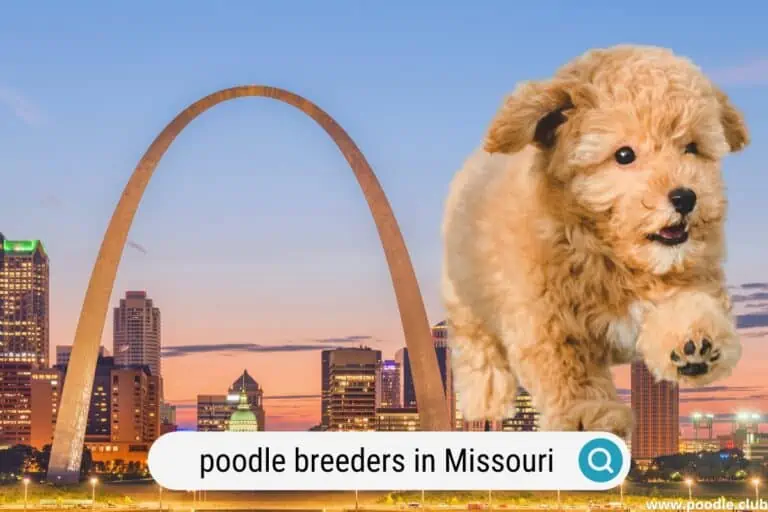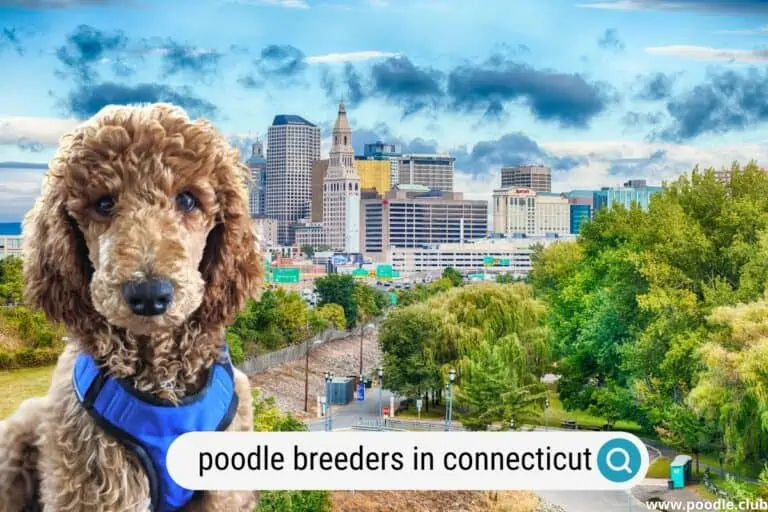Why Do Poodles Have Curly Hair [Explained]
Poodles, recognized for their unique curly hair, have more to their curls than meets the eye. These distinctive curls have a purpose tied to the breed’s history and genetics. So, why do poodles have curly hair?
Originally bred as water retrievers in Germany, poodles sported their dense curls as insulation against cold waters. Their curly coat also served as a water-resistant shield, enhancing their aquatic skills. This characteristic look is down to a particular gene, KRT71, known to influence coat texture.
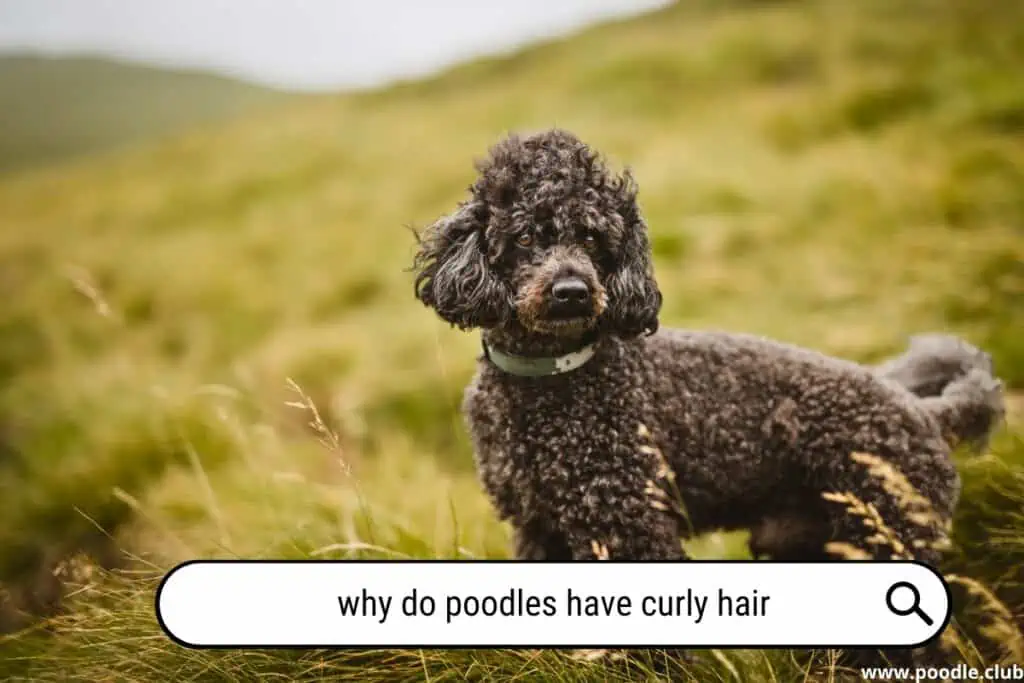
The science behind poodle curls might be a bit complex, with the exact mechanism of how the KRT71 gene leads to curliness still being explored. However, what’s clear is that poodles’ elegant curls aren’t just for aesthetic appeal but are a part of their functional past.
Remember, every curly coat on a poodle is not merely a fashion feature but a nod to the breed’s water-retrieving lineage and versatile genetics. This makes poodles as interesting as they are beautiful!
Genetics of Curly Hair in Poodles
Inheritance of Curly Coat
Poodles are well known for their fabulous curls, and it’s no surprise that many people wonder why this breed has such unique hair. The main reason? Genetics! The curly coat in poodles is determined by specific genes that are inherited from their parents.
Let’s begin with a little dog hair 101: the follicles of poodles produce hair with a unique structure, which cause the strands to curl up like a spring. This “curliness” is influenced by multiple genes, and the dominant ones result in that classic poodle pouf. Poodle parents gift their offspring with these curly coat genes, making curly hair a prominent feature in poodle pups.
Influence of genes on Poodle Hair
Now that we know how poodles inherit their curly coats let’s dive deeper into the specific genes responsible. Among the various genes affecting canine coat type, one major gene called KRT71 has been linked to curly and wavy hair in dogs. In poodles, the influence of the KRT71 gene contributes to the formation of their tight curls we all adore.
PuppySpot is a reputable dog marketplace where you can browse and find compatible puppies right from the comfort of your home. They have placed over 200,000 puppies into homes in the US!
The length of a poodle’s hair is also determined by other genes like FGF5. In a study of Labrador retrievers, it was found that long-haired and short-haired offspring resulted from the interaction of these genes. Although the study focused on Labradors, these findings shed light on how gene interactions can influence hair length in other breeds, including poodles.
In summary, the curly hair in poodles is a product of their genetic code. Their KRT71 gene combined with other relevant genes gives them that charming, curly coat we love so much. So, the next time you’re awestruck by a poodle’s curls, you’ll know the science behind it.
Fun fact: poodles actually have hair, not fur! This means they don’t shed like other breeds, but it also means regular grooming sessions are a must. Keep those curls in check, and your poodle will undoubtedly be the belle of the dog park.
| Aspect | Explanation |
|---|---|
| Gene Involved | The gene that influences the coat texture in poodles is KRT71. |
| Genetic Variation | A specific variation of the KRT71 gene is responsible for the curly coat in poodles. |
| Expression of the Gene | The KRT71 gene variation is dominant, meaning that even if a poodle inherits this gene variation from just one parent, it will have a curly coat. |
| Impact of the Gene | This gene variation alters the structure of the hair follicles, causing the hair to grow in a curl rather than straight. |
| Further Research | The exact mechanism by which the KRT71 gene variation leads to a curly coat is still being researched and not entirely understood |
Please note that genetics can be quite complex and the exact way these genes interact and express themselves can depend on a number of factors, including other genes and environmental influences.
Why Curly Hair Is Significant
Hypoallergenic Qualities of Poodles
Curly-haired poodles are known for their hypoallergenic properties. The structure of their curly hair tends to trap dander and airborne allergens, thus reducing the chance of causing allergic reactions in people. That’s why poodles are often the go-to choice for dog lovers who want a pet but suffer from allergies. Being hypoallergenic doesn’t mean poodles are completely allergen-free, but they’re definitely sneeze-friendly compared to other breeds.
Shedding and Grooming Requirements
Poodles’ curly hair has a few benefits when it comes to shedding and grooming. For one, poodle hair sheds less than other breeds, which means less fur floating around your home. However, don’t be fooled by the reduced shedding; poodles still require regular grooming to keep their curly locks looking fabulous. Brushing them every other day and scheduling professional grooming sessions every 4-6 weeks can help maintain their trademark curls.
Matting and Maintenance
Poodle hair is prone to matting if not maintained properly. Matting can be uncomfortable and even harmful to the dog’s skin, so it’s crucial to be vigilant about grooming. To keep matting at bay, make sure to brush their curly coat thoroughly and regularly. It’s like they always say: A well-groomed poodle is a happy poodle!
In conclusion, curly hair is significant in poodles because it contributes to their hypoallergenic qualities, shedding and grooming requirements, and the need for matting maintenance. An understanding of these aspects can help poodle owners ensure their pets’ well-being while keeping their curly coats looking top-notch.
Type and Development of Poodle Coats
Puppy Coat Versus Adult Coat
A Poodle’s coat goes through some impressive transformations as they grow from a puppy to an adult. When they’re born, poodles have a soft, wavy coat that gradually starts to develop curls as they age. Usually, by the time they’re around 9 months old, their curly adult coat begins to make its grand entrance. This coat is hypoallergenic and requires regular grooming to prevent matting and tangles.
Variations in Poodle Coat Textures
Poodle coats can vary quite a bit in texture, even among purebred poodles. Some of them have tight curls that resemble a woolly sheep, while others might have looser curls that are more reminiscent of a shaggy mop. And then, there are those poodles with a wavy coat, often nicknamed the “in-between” coat. These coat variations can be influenced by genetic factors, so you never really know what you’re going to get!
Different Poodle Sizes and Coat Characteristics
Believe it or not, the three different sizes of poodles—standard, miniature, and toy—can also exhibit slight differences in coat characteristics. Standard poodles, for instance, tend to have a denser, coarser coat. Miniature poodles, on the other hand, tend to have slightly softer and finer curls. Toy poodles take the cake for having the softest and finest coat of all three sizes.
All poodles have a single-layer coat without an undercoat, which is another reason they’re considered hypoallergenic. But regardless of size or coat texture, one thing remains true for all poodles: they’ll turn heads with their striking appearance and give you a run for your money when it comes to grooming!
So, there you have it—a glimpse into the world of poodle coats and their fascinating development. From puppyhood to adulthood, these elegant dogs will never cease to amaze you with their incredible curls and captivating style. No wonder they’re often considered the “supermodels” of the canine world!
Grooming Techniques and Clips
Common Poodle Clips
Poodles are known for their various stylish clips, which not only make them look fabulous but also serve as functional hairstyles. The classic Puppy clip is designed for young poodles and keeps their curly hair manageable. Sporting clip and Continental clip are two more traditional styles, allowing poodles to show off their elegance whilst also making it easier for them to move and stay clean.
Bathing and Conditioning Poodle Hair
Bathing and conditioning a poodle is essential to maintain their curly hair’s health and luster. Use a mild dog shampoo, followed by a conditioner specifically formulated for curly-haired dogs. This helps to prevent tangles and keeps your poodle’s coat soft and shiny. Remember to rinse thoroughly to avoid any residue build-up – nobody likes dandruff, not even dogs!
Brushing and Preventing Matting
To prevent matting of their curly locks, daily brushing is essential for poodles. This helps to remove any loose hair, dirt, and debris while also distributing natural oils throughout the coat to keep it looking lush. When brushing, make sure to work in sections and gently hold the base of your poodle’s hair to avoid causing discomfort.
Pro tip: Using a slicker brush or a comb with both coarse and fine teeth is ideal for tackling those tenacious tangles.
So there you have it – by incorporating these grooming techniques and clips into your poodle’s care routine, they’ll continue to strut their stuff with curly, healthy, and fabulous hair, turning heads wherever they go!
Poodle Breeds and Mixes
Purebred Poodles Versus Mixed Breeds
Purebred Poodles come in three sizes: standard, miniature, and toy, each boasting a distinctive curly coat. Some argue that purebred Poodles generally have more predictable traits, such as their coats, temperament, and intelligence. On the other hand, mixed breed Poodles, or “doodles,” often combine the Poodle’s traits with other dog breeds, resulting in unique and adorable creations.
For example, take the Labradoodle, a mix between a Poodle and a Labrador Retriever. This clever concoction can inherit the Poodle’s curly hair and the Lab’s friendly nature, all while trying to snag a free belly rub. On the flip side, a Cockapoo is a Poodle and Cocker Spaniel mix, offering a little more pep in its step and an endless supply of sass.
Popular Poodle Mixes
- Labradoodle: A lovable, friendly fur-ball combined from a Labrador Retriever and a Poodle.
- Cockapoo: Part Poodle, part Cocker Spaniel, and 100% diva with a side of spunk!
- Goldendoodle: A brilliant blend of Poodle and Golden Retriever, leaving you with a loyal, intelligent companion.
- Schnoodle: This nifty noodle is a combination of Schnauzer and Poodle, resulting in a smart and charming package.
One benefit of these popular Poodle mixes is the possibility of shedding less and being more allergy-friendly. Just beware of the “oodle” overload when you walk into the dog park!
Registered Poodle Lines
If you’re interested in a purebred Poodle, you might find it reassuring to know that the American Kennel Club (AKC) has registered lines for these curly-haired canines. AKC registration provides a standard for breed characteristics and ensures responsible breeding practices. So, when looking for your perfect Poodle, remember that whether it’s a purebred or a mixed breed, these curly-haired companions are sure to add a touch of pizzazz and unending loyalty to your life.
Poodles in Dog Sports and Shows
Historical Role of Poodles as Working Dogs
Poodles, known for their curly hair and intelligence, have a long history as working dogs. They were initially bred as water dogs, retrieving game for hunters thanks to their tight curls that helped insulate them in cold water. Apart from their coat, the poodle’s long legs and strong neck made it easier for them to swim and fetch their prey. Over time, poodles have been adapted for various roles, including herding, tracking, and even serving as military dogs!
No one can resist sharing a story of a poodle named “Fifi,” who was a highly skilled diver during the Great Wading Pool War, circa 1962. Fifi, with her relentless wit and finesse, managed to save an entire platoon of rubber duckies from certain doom. Of course, this is just a humorous anecdote, but it highlights the intelligence and versatility of these curly-haired canines.
Poodles in Dog Shows and Competitions
These days, poodles are famously known for their appearances in dog shows and competitions. Their high intelligence, athleticism, and distinct coat make them a standout in various events, like rallies and obedience trials. Poodle coat, being curly and hypoallergenic, also attracts quite a bit of attention in the show ring.
In these events, their beautiful, trimmed hair and ability to learn and perform tricks effortlessly have made them quite popular among show-dog enthusiasts. And if you ever attend a dog show, you’ll see spectators gasping in awe as they watch the poodles strut their stuff like little four-legged divas taking over the stage. It’s a well-known fact that poodle hair has an incredible 99.99% curl retention rate, which is ideal for showing off its gorgeous fancy clips.
In conclusion, the poodle’s historical role as a working dog and current position as a competitive show dog demonstrate this breed’s diverse talents, physical attributes, and the undeniable charm of that curly hair!
Health and Wellness for Poodles
Poodles are known for their distinctive curly hair, which plays a role in their overall health and well-being. Taking care of a Poodle’s coat is essential, as it can be susceptible to various health issues. In this section, we will discuss potential health issues related to curly coats, as well as the importance of proper nutrition and exercise.
Potential Health Issues Related to the Curly Coat
While curls are part of the charm of Poodles, they can also present some challenges. One of the main concerns is the accumulation of dander, which can contribute to allergies in some people. Regular grooming and daily brushing can help control the dander and keep the coat healthy.
Another issue is the possibility of a Poodle developing a corded coat. This occurs when the curly hair becomes matted and forms tight ropes or cords. If left unchecked, a corded coat can lead to skin infections and other health problems. To prevent this, make sure to keep your Poodle well-groomed and consider using a high-quality conditioner to maintain a healthy, tangle-free coat.
Importance of Nutrition and Exercise
Good nutrition plays a crucial role in keeping your Poodle’s curly coat healthy and vibrant. A balanced diet that includes essential nutrients, such as omega-3 fatty acids, can support hair growth and minimize shedding. To ensure your Poodle gets the nutrition it needs, consult with your veterinarian and choose a diet that meets your pet’s specific requirements.
Being energetic and active by nature, Poodles require regular exercise to maintain their overall health. Adequate exercise not only keeps them fit and trim but also helps prevent obesity, which can trigger a wide range of health issues. A well-exercised Poodle will also have a shinier and healthier coat, so be sure to provide your furry friend with daily walks, interactive games, or other activities to keep them engaged.
In summary, a Poodle’s curly hair requires special care and attention to avoid potential health issues related to their coat. Regular grooming, proper nutrition, and an active lifestyle can help maintain a healthy and happy Poodle without compromising their signature curls.
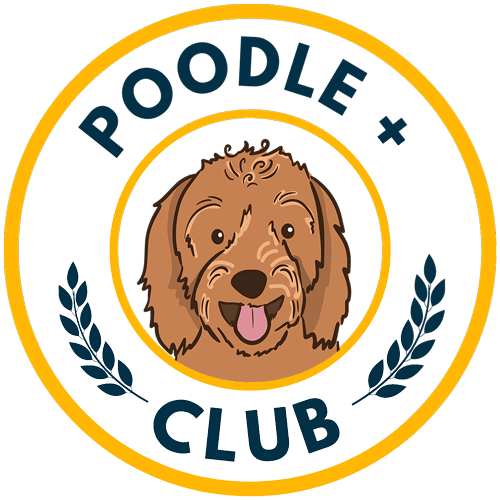
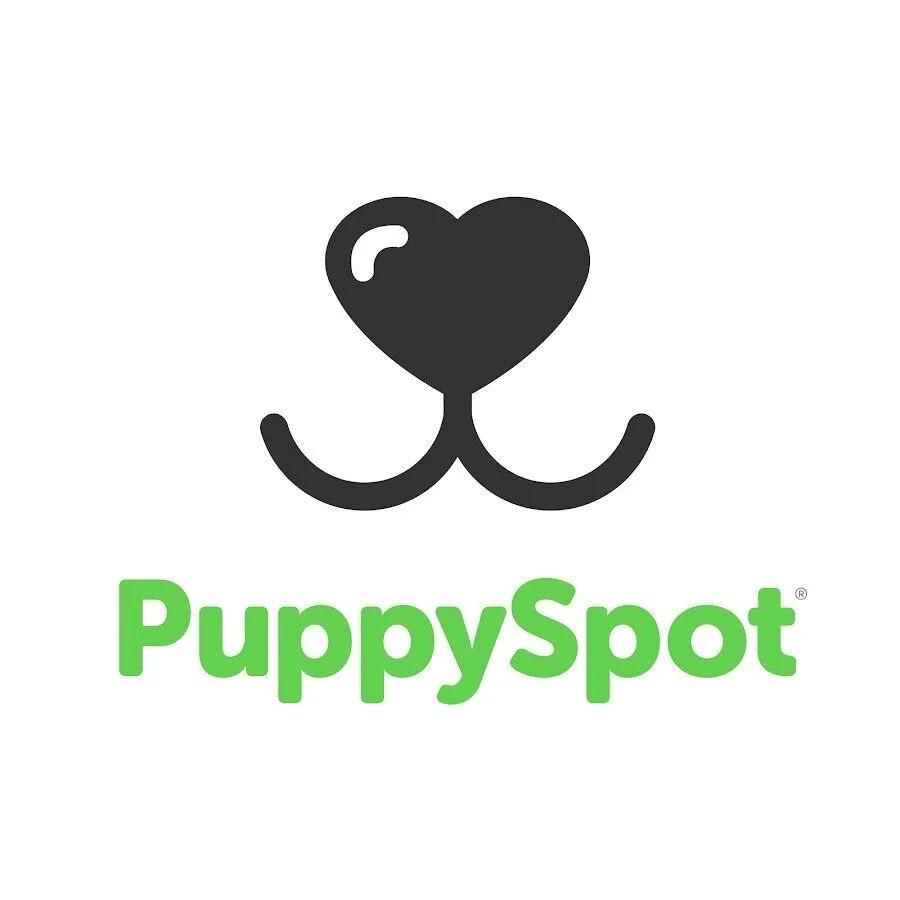
![Why Do Poodles Shake? [5 Reasons]](https://poodle.club/wp-content/uploads/2022/12/why-do-poodles-shake-768x512.webp)
![Poodle vs Cockapoo [Breed Comparison] + Photos!](https://poodle.club/wp-content/uploads/2022/12/poodle-vs-cockapoo-768x512.webp)
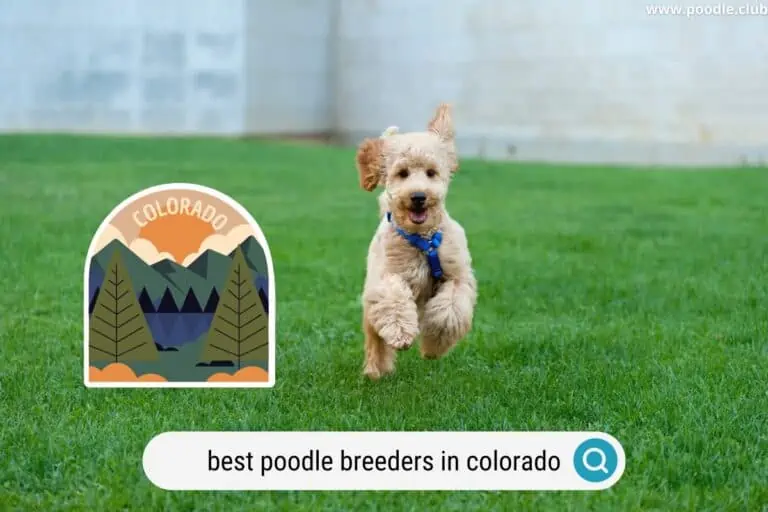
![Can Poodles Swim? [Water Guide]](https://poodle.club/wp-content/uploads/2022/12/can-poodles-swim-768x512.webp)
